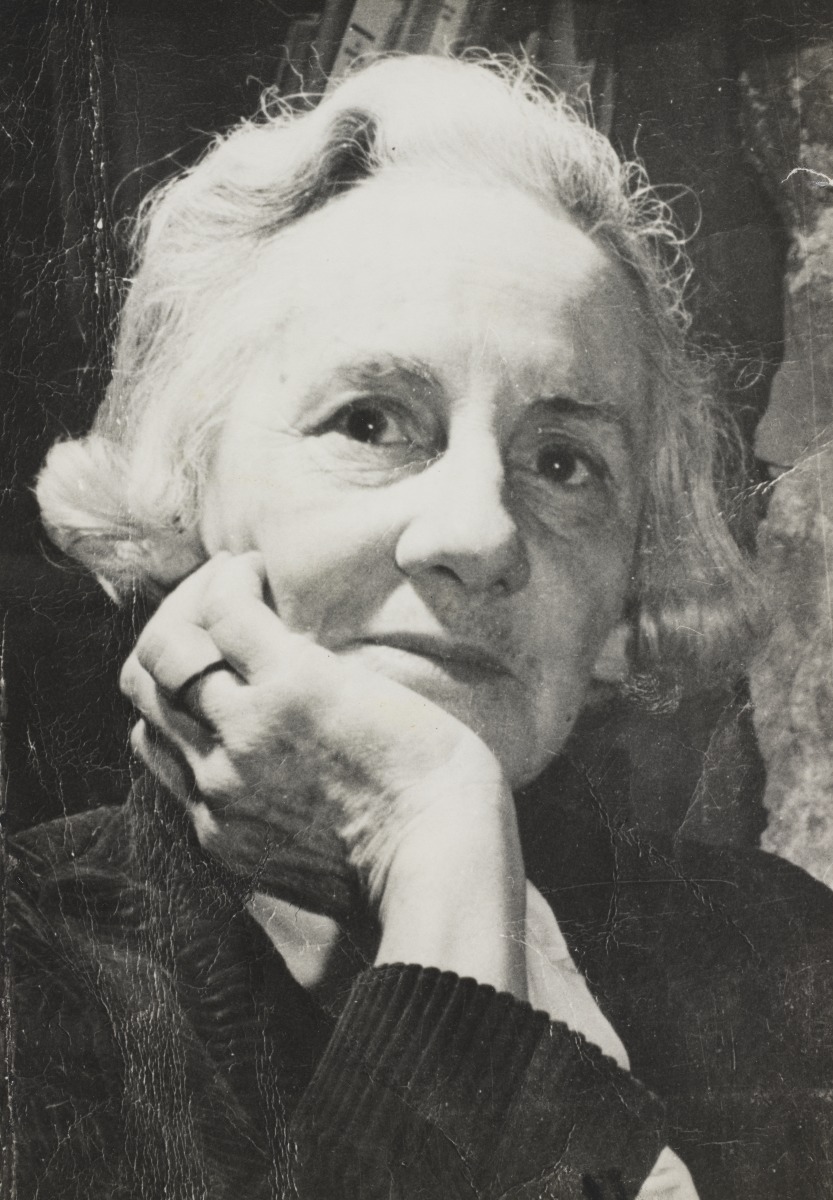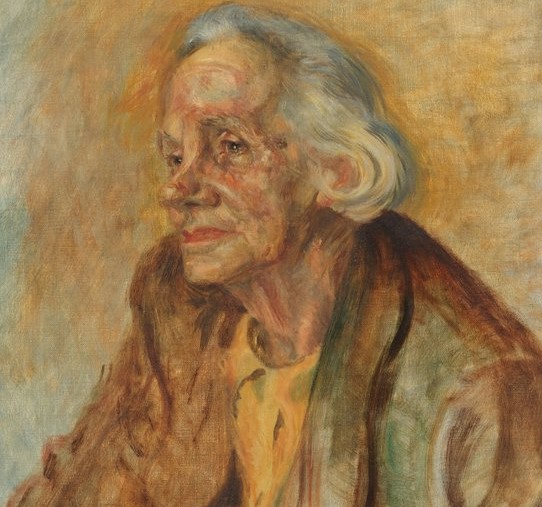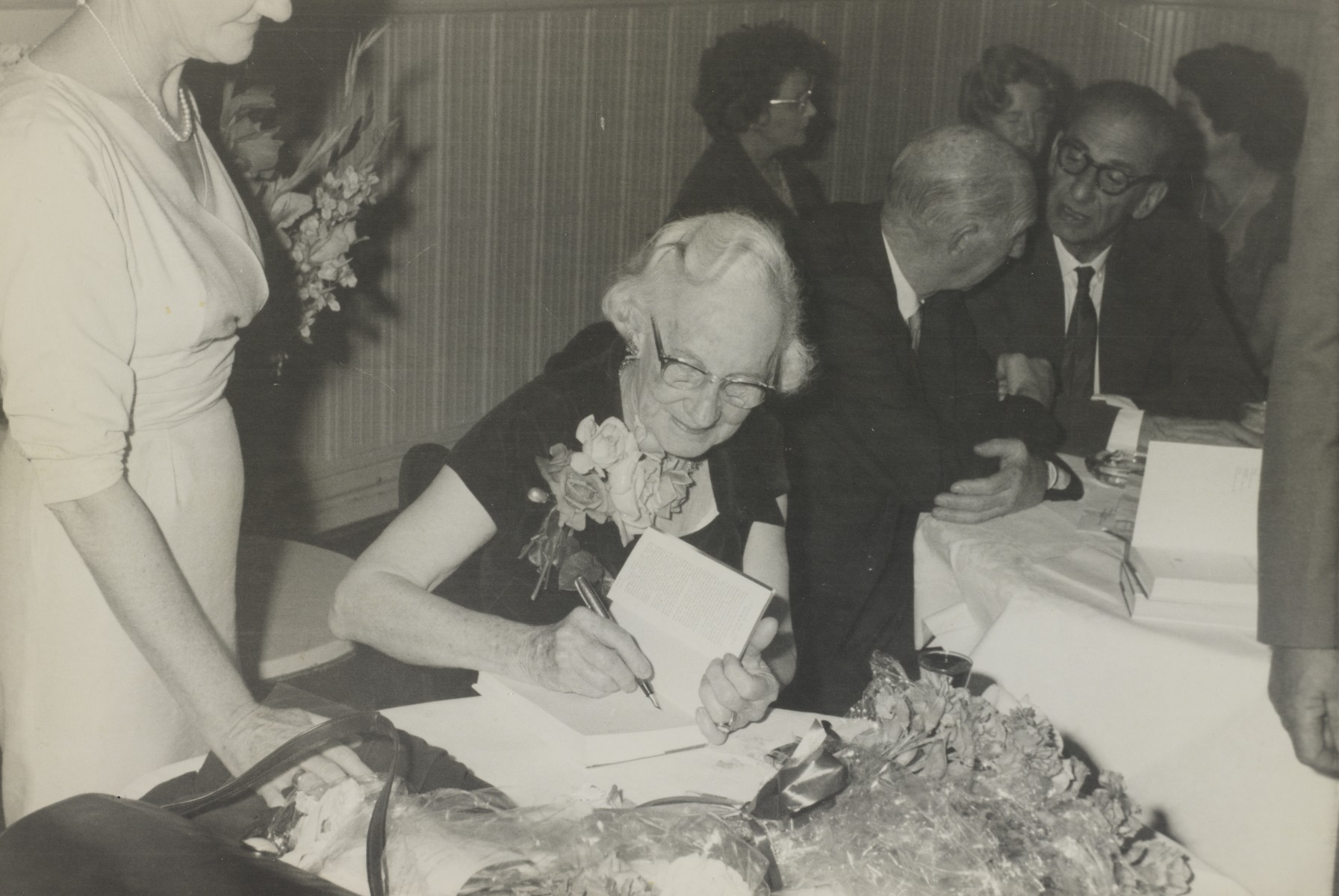In this episode of Biographers in Conversation, Dr Nathan Hobby chats with Dr Gabriella Kelly-Davies about his choices while crafting The Red Witch: A Biography of Katharine Susannah Prichard, a towering figure in Australia’s literary life.
The Red Witch
Novelist, journalist and activist Katharine Susannah Prichard won fame for vivid novels that broke new ground depicting distinctly Australian ways of life and work - from Gippsland pioneers and West Australian prospectors to Pilbara station hands and outback opal miners.
Katharine Susannah Prichard
State Library of Western Australia
Katharine’s prize-winning debut, The Pioneers, made her a celebrity, but she turned away from jaunty romances to write a trio of inter-war classics, Working Bullocks, Coonardoo and Haxby’s Circus.
Heralded in her time as the ‘hope of the Australian novel’, her good friend Miles Franklin named Katharine ‘Australia’s most distinguished tragedian’. Katharine was a founding member of the Communist Party in Australia and her novels, which were ahead of their time, reflected her political ideals.
The Role of Biography
A conventional, chronological ‘cradle to grave’ biography structured in five parts, The Red Witch traces Katharine’s journey from the genteel poverty of her Melbourne childhood to her membership of the Australian Communist Party and impulsive marriage to Victoria Cross winner Hugo Throssell. It concludes with her long widowhood as a ‘red witch’, marked out from society by her loyalty to the Soviet Union and her unconventional ways.
Katharine Susannah Prichard
Noel Counihan
oil on canvas
Image courtesy National Gallery of Australia, Canberra
Through his meticulous research, Nathan accumulated a mountain of archival material and other evidence, so much so he was tempted to write The Red Witch in three volumes. However, his publisher offered him a contract for one 150,000-word biography. Nathan’s archival research and historical detective work uncovers many unknown aspects of Katharine’s life, including the likely identity of the mysterious lover who influenced her deeply in her twenties. It also reveals her reasons for withdrawing from politics during her remarkable five-year literary peak and details of her intimate friendship with poet Hugh McCrae.
The Red Witch was published 50 years after Katharine’s death. Lively and detailed, The Red Witch is a gripping narrative alert to the drama and tragedy of Katharine’s remarkable life.
BA898/6: Katharine Susannah Prichard signing a book at her eightieth birthday party,
Perth, Western Australia
4 December 1963
State Library of Western Australia
Praise for The Red Witch: A Biography of Katharine Susannah Prichard
Deeply researched and engagingly written.
West Australian
Nathan Hobby’s biography of Katharine Susannah Prichard is an eloquent and powerful tracing of the life of one of Australia’s once most celebrated writers.
Ian Syson, Sydney Morning Herald
This beautifully crafted biography is a fitting tribute to her memory.
Canberra Times
A definitive biography, a book tracing her life and the formation of the Australian literary culture she helped to create.”
The Saturday Paper
A revealing account of Prichard’s thrilling life and a sensitive tribute to one of literary Australia’s most curious founding figures ... Anyone who still believes Australian literature only began mid-20th century with male figures such as Patrick White needs to read this informative and engrossing work.
Books + Publishing
Prichard is a key figure in Australian literary history, a key figure in Australia’s intellectual history, and a key figure in Australia’s left-wing political history ... Hobby aims to show a ‘lived life’.
The Conversation
Sympathetic, comprehensive and well-documented.
Australian Women Writers
An absorbing, compelling biography of one of Australia’s major authors.
Sydney Arts Guide
Hobby’s book is decades overdue ... Through it, readers will come to know one of our greatest novelists.
Queensland Reviewers’ Collective
An engaging and eloquent biography of a significant figure of Australian literature and politics about whom we have, until now, no more than a cursory knowledge.
Rochford Street Review
A literary biography can be a form of creative writing in the way it engages with its audience, its shaping of amorphous material, its narrative drive, its style and elegance. This one does all these things in an original way … Hobby’s prose is clear, supple and alive with gentle humour. His lightness of touch belies the exhaustive detail of the research.
Nicholas Jose
This biography is smooth-as-silk. What an excellent writer he is. Always provisional with information he cannot entirely verify, in command of politics and context and self-effacing. Such an important book.
Brenda Walker
About Nathan Hobby
Nathan Hobby is a Perth author, librarian and honorary research fellow at the University of Western Australia. His novel The Fur (Fremantle Press 2004) won the TAG Hungerford Award.
Learn more about Nathan Hobby
Visit his blogs at nathanhobby.com.
Interviews and Conversations with Nathan Hobby
Author talk – The Red Witch with Nathan Hobby
Katharine Susannah Prichard: The Red Witch, State Library of Western Australia
Q & A with Nathan Hobby, Melbourne University Publishing.
- Describe Katharine Susannah Prichard in three words
- Loving
- Questing
- Believing
- What sparked your fascination with this literary giant?
- When I was eighteen and living with my grandparents while studying, I was runner-up in a short story competition run by the Katharine Susannah Prichard Writers’ Centre. My grandparents drove me out to the centre, in Katharine’s old cottage, to accept the award. Being old Western Australians, they both had opinions and stories about Katharine and her husband Hugo and I just wish I could remember what they were. There was a strong sense of Katharine in her wooden cottage and a life once lived there. I think a seed was planted.
- What drew you to write her biography?
- Katharine’s writing itself grabbed me with the tragic vision of Coonardoo and then the jaunty romance of The Pioneers. Beyond that, she lived the most incredible life of idealism and triumphs tempered with tragedy. Her story had only been told from her son’s perspective in the 1970s and I realised there were many mysteries left to explore and sources which hadn’t been tapped.
- What has been the highlight for you in the process of writing and researching?
- It was a magical moment to hold Katharine’s papers in my hands for the first time at the National Library. I’d flown to Canberra in 2014 and was in a reading room with just one or two other researchers, watched by one of the NLA staff. The uniform buff-coloured boxes were wheeled out on a trolley. To handle letters in her handwriting, paper she’d once touched, was uncanny. It made her more alive to me. Later, I had to make do with scans and transcripts only, as it was impossible to get back to Canberra when my two children were born and then Covid struck. But the experience of handling the originals stayed with me.
- Were there any particularly surprising aspects of Katharine’s life you came across in your research?
- Some of the surprises were about finding shifts in her beliefs that have been ironed out by the simple label of ‘KSP the communist’. It seems she was a devout Christian, despite doubts, up until her father’s suicide in 1907. Her early dalliances with left-wing ideas didn’t stop her writing in favour of compulsory military training in 1908. Her conversion to radicalism after the Bolshevik Revolution in 1917 wasn’t simply to straight Marxism – initially, like other radicals, she was drawn to syndicalism just as strongly. Then there’s the period between 1924 and 1929 when she wrote her three great novels - Working Bullocks, Coonardoo, and Haxby’s Circus – in which it turns out she wasn’t very involved in political activism and she took a break from the Communist Party, with the local branch barely operating. When she returned to Perth from Sydney in 1946, her main political involvement became the Peace Council. She was a defender of the Soviet Union ahead of the Communist Party of Australia, especially as the two diverged.
- Tell us about your writing routine. Where do you like to write? When and how often?
- Katharine’s good friend, the writer Sumner Locke, once told a young man who was complaining that he had nowhere to write that if he really wanted to write, he’d write sitting on the edge of the bath if he had to. I took that as good advice over the course of writing this biography and snatched whatever time I could, with many words written at the dining table in the family room while toddlers made noise and mess. But I do have a bad habit of wanting just the right conditions. I like sitting outside with my laptop at the university when it isn’t too hot or too cold. I like sitting in the silent room at the university library when it isn’t too crowded. I like sitting at my desk at home when no-one else is awake. If I can have a day of writing, I treat it like a job and go from 9 to 5.
- What are you currently reading?
- Maud Newton’s Ancestor Trouble: A Reckoning and a Reconciliation, a startling memoir about genealogy, genetics and family history. Also, my friend Tracy Ryan’s wonderful new poetry collection Rose Interior.
- What image of Katharine do you hope to leave behind with the readers?
- One image isn’t enough. I want readers to hold together the spirited Kattie of her twenties, determined to be the great chronicler of Australia; the world-weary Mrs Throssell of the 1920s, bursting with her best prose; and the steely Comrade Katya of her last decades, holding onto the tattered dream of the Bolshevik Revolution.








